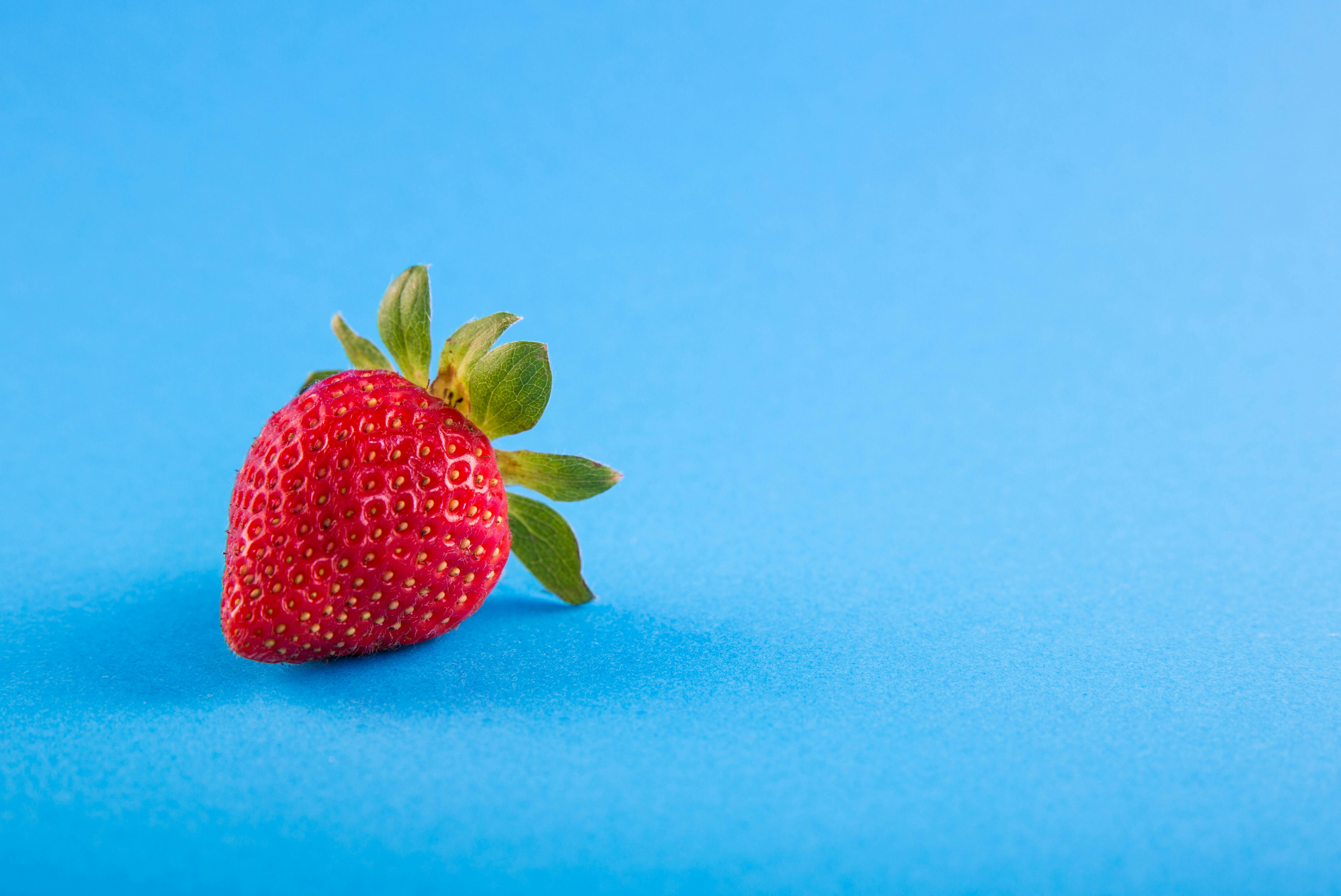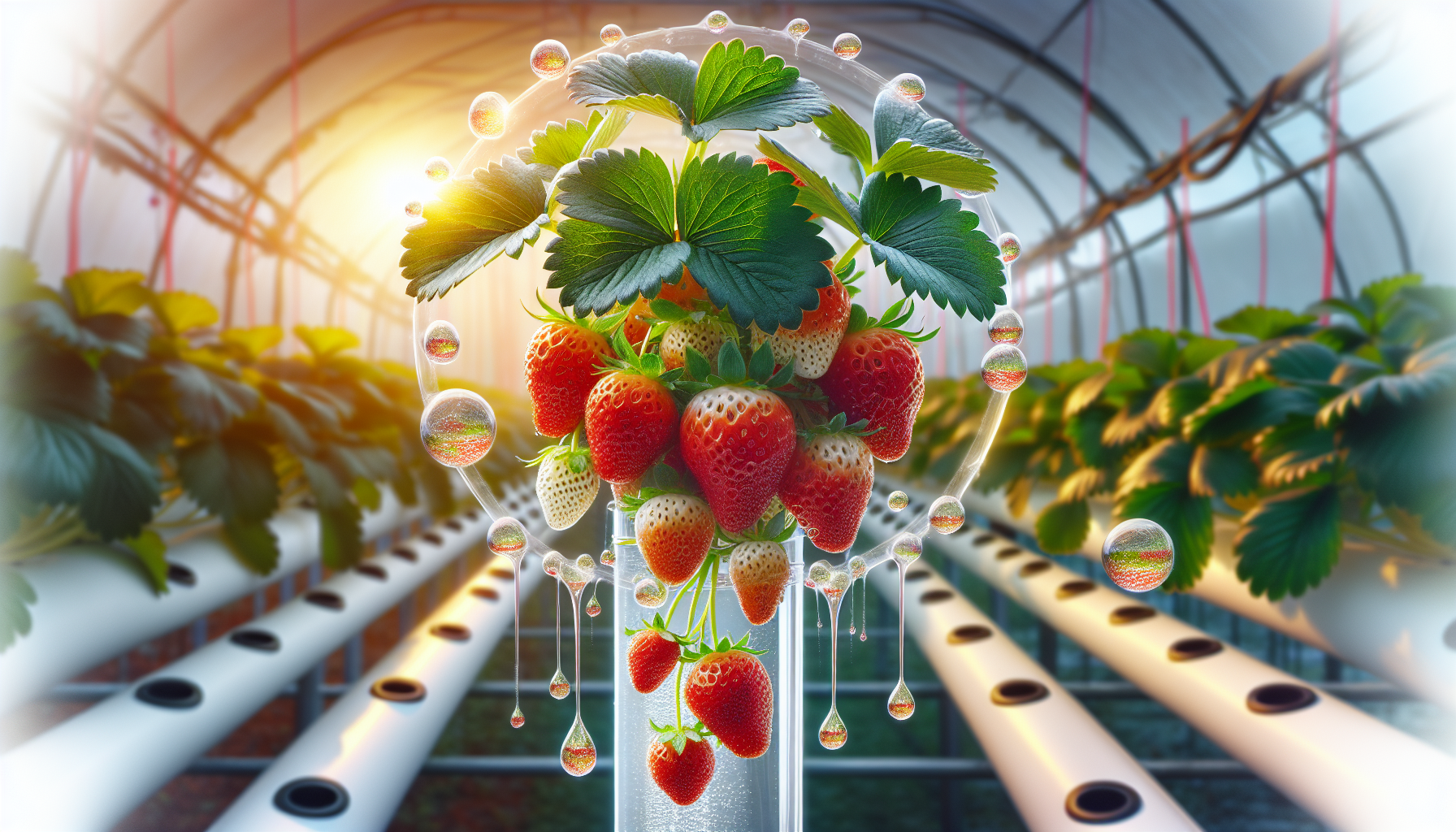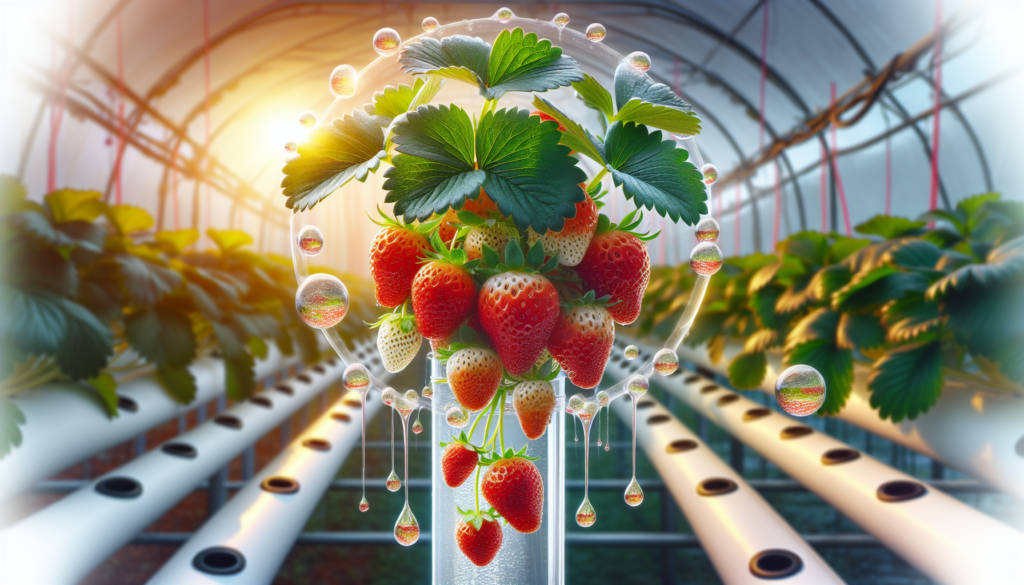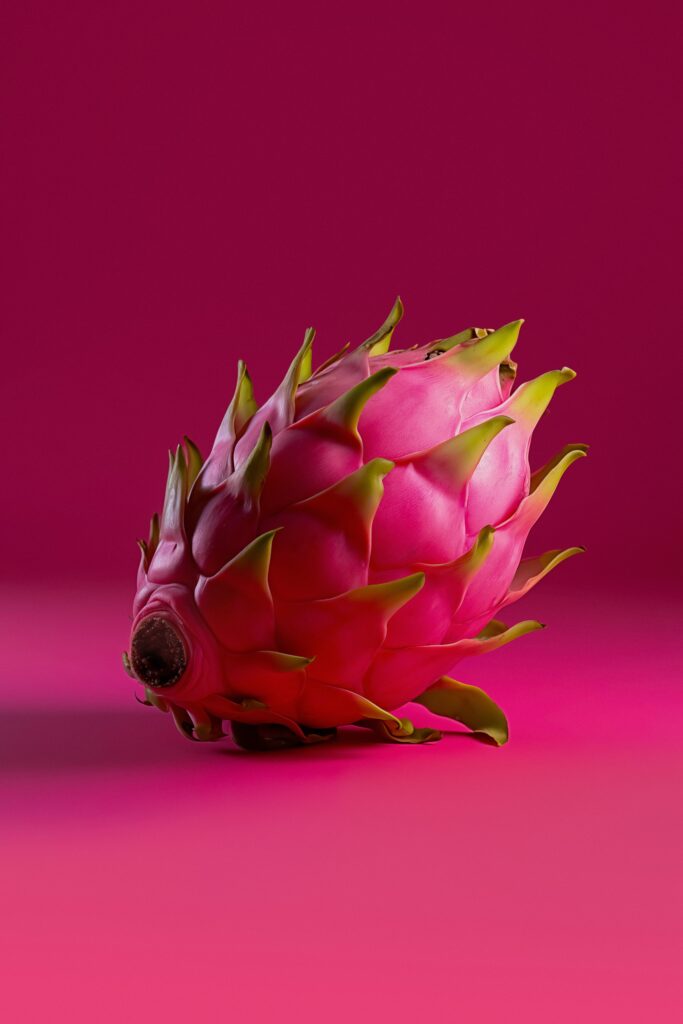If you’re a fan of juicy, sweet strawberries and are curious about growing them in a hydroponic system, you’re in for a treat! Hydroponics, a method of growing plants without soil but using nutrient-rich water, has gained popularity in recent years. But can you really grow strawberry plants in this innovative system? And more importantly, is there a specific season that yields the best results? In this article, we will explore the feasibility of growing strawberries hydroponically and discover the optimal season to achieve bountiful harvests. So get ready to embark on an exciting journey of strawberry cultivation that defies traditional farming methods!

Benefits of Growing Strawberry Plants in a Hydroponic System
Increased Yield
One of the major benefits of growing strawberry plants in a hydroponic system is the increased yield. Hydroponic systems create optimal growing conditions for strawberry plants, resulting in larger and more abundant fruit. By providing the plants with the perfect balance of nutrients, light, and water, you can maximize their productivity and harvest more strawberries than traditional soil-based cultivation methods.
Year-round Cultivation
Unlike traditional soil-based cultivation, hydroponic systems allow for year-round cultivation of strawberry plants. This is especially advantageous for farmers or gardeners who live in regions with unfavorable climates for strawberry production. With a hydroponic system, you have control over the growing environment and can create the ideal conditions for strawberry plants to thrive, regardless of the season.
Reduced Water Usage
Another significant advantage of growing strawberry plants in a hydroponic system is the reduced water usage. Hydroponic systems use recirculating water, meaning that the same water is continuously reused, significantly reducing water consumption compared to traditional soil-based cultivation. The water is also delivered directly to the roots of the plants, minimizing evaporation and water waste. This makes hydroponic cultivation of strawberry plants a more sustainable and environmentally-friendly option.
Better Pest Control
Hydroponic systems provide better pest control for strawberry plants. By growing strawberries indoors or in controlled environments, you can prevent pests and diseases from infesting your plants. Unlike in traditional soil-based cultivation where pests can easily access the plants, hydroponic systems create a physical barrier that keeps pests at bay. Additionally, since you have control over the nutrient solution and growing conditions, you can optimize the plants’ health and resilience, making them less susceptible to pests and diseases.
Consistent Nutrient Supply
In hydroponic systems, nutrient solutions are carefully balanced and consistently delivered to the strawberry plants. This ensures that the plants receive all the essential nutrients they need for healthy growth and fruit production. Unlike in traditional soil-based cultivation, where nutrient availability can vary depending on the soil quality and composition, hydroponic systems offer a consistent supply of nutrients, resulting in stronger and more vigorous strawberry plants.
Requirements for Growing Strawberry Plants Hydroponically
Proper Lighting
Proper lighting is crucial when growing strawberry plants in a hydroponic system. Since strawberry plants require a minimum of 8-10 hours of sunlight daily, it is essential to provide them with sufficient artificial light when growing them indoors or in environments with limited natural light. LED grow lights, high-intensity discharge (HID) lights, or fluorescent grow lights are popular choices for hydroponic strawberry cultivation.
Growing Medium
Choosing the right growing medium is a key requirement for hydroponic strawberry cultivation. Some common options include coconut coir, rockwool, perlite and vermiculite mix, and expanded clay pebbles. The growing medium should have excellent water retention capabilities while allowing for adequate drainage to prevent waterlogged roots.
Nutrient Solution
Creating a well-balanced nutrient solution is essential for the successful growth of strawberry plants in a hydroponic system. The nutrient solution should contain all the essential elements required for strawberry growth, including nitrogen, phosphorus, potassium, as well as micro-nutrients like calcium, iron, and magnesium. Regular monitoring and adjustment of nutrient concentrations are necessary to ensure optimal plant health.
Temperature and Humidity
Maintaining the right temperature and humidity levels is critical for hydroponic strawberry cultivation. The ideal temperature range for strawberry plants is between 60°F and 75°F (15°C and 24°C). Humidity levels should be kept around 50-70%. Proper ventilation and air circulation are also important to prevent the buildup of excess humidity and reduce the risk of fungal diseases.
pH Levels
Strawberry plants thrive in slightly acidic conditions, with an optimum pH range of 5.5 to 6.5. Monitoring and adjusting the pH of the nutrient solution is crucial to ensure that the plants can efficiently absorb the necessary nutrients. pH testing kits or digital pH meters can be used to assess the pH levels, and adjustments can be made by adding pH-up or pH-down solutions as needed.
Pollination Techniques
Since hydroponic systems don’t rely on natural pollinators like bees, manual pollination is often necessary for proper fruit set in strawberry plants. This can be done by gently shaking the plants or using a small brush to transfer pollen between flowers. It is important to perform pollination during the flowering stage to ensure proper fruit development.
Choosing the Right Strawberry Varieties for Hydroponic Cultivation
Day-neutral Strawberry Varieties
Day-neutral strawberry varieties are ideal for hydroponic cultivation as they continue to produce fruit throughout the growing season, regardless of day length. They are not affected by the changing seasons and can be harvested continuously. Some popular day-neutral varieties for hydroponic cultivation include ‘Albion,’ ‘Seascape,’ and ‘Tribute.’
Everbearing Strawberry Varieties
Everbearing strawberry varieties produce two to three harvests per year, typically in spring, summer, and fall. They are suitable for hydroponic cultivation as they offer a longer harvest period compared to June-bearing varieties. Examples of everbearing varieties that thrive in hydroponic systems include ‘Fort Laramie,’ ‘Ogallala,’ and ‘Quinault.’
June-bearing Strawberry Varieties
While June-bearing strawberry varieties have a shorter harvest period, they are still suited for hydroponic cultivation. These varieties typically produce a single, bountiful harvest in late spring to early summer. Popular June-bearing varieties for hydroponic systems include ‘Chandler,’ ‘Honeoye,’ and ‘Jewel.’
Hydroponic Systems Suitable for Growing Strawberry Plants
Nutrient Film Technique (NFT)
The Nutrient Film Technique (NFT) is a popular hydroponic system for growing strawberry plants. In this system, a thin film of nutrient-rich water is continuously circulated over the roots of the plants, providing them with a constant supply of nutrients. The roots are exposed to air, ensuring adequate oxygenation.
Drip Irrigation System
Drip irrigation systems are effective for hydroponic strawberry cultivation. In this system, nutrient solutions are delivered directly to the plants’ roots through a network of drip emitters. This method allows for precise control over the amount and timing of water and nutrients delivered to each plant.
Deep Water Culture (DWC)
Deep Water Culture (DWC) systems involve suspending the strawberry plants’ roots in a nutrient-rich water solution. The roots are submerged in the water, allowing for efficient nutrient absorption. Oxygen is supplied through the use of air stones or diffusers, ensuring the roots receive adequate oxygenation.
Aeroponics
Aeroponic systems are also suitable for growing strawberry plants hydroponically. In aeroponics, the plants’ roots are suspended in air while being periodically misted with a nutrient solution. This method promotes optimal root aeration and nutrient uptake, resulting in healthy plant growth and higher fruit yields.
Vertical Farming Systems
Vertical farming systems, such as vertical towers or stacked trays, can be used for hydroponic strawberry cultivation. These systems maximize space utilization and allow for a higher number of strawberry plants to be grown in a smaller area. Vertical farming systems often incorporate LED grow lights to provide sufficient light for plant growth.

Best Lighting Options for Strawberry Plants in Hydroponic Systems
LED Grow Lights
LED grow lights are a popular choice for hydroponic strawberry cultivation. They have a long lifespan, are energy-efficient, and emit specific light wavelengths that promote plant growth. LED lights can be customized to provide the optimal light spectrum for different growth stages of strawberry plants.
High-Intensity Discharge (HID) Lights
HID lights, such as metal halide (MH) and high-pressure sodium (HPS) lamps, are also suitable for hydroponic strawberry cultivation. HID lights emit high-intensity light and are capable of providing the necessary light intensity for optimal plant growth. However, they generate more heat and consume more energy compared to LED lights.
Fluorescent Grow Lights
Fluorescent grow lights, such as T5 or T8 tubes, are a cost-effective option for hydroponic strawberry cultivation, especially for smaller setups. They produce less heat and consume less energy compared to HID lights. While fluorescent lights may not provide the same intensity as LED or HID lights, they are still sufficient for strawberry plants’ growth and development.
Selecting a Growing Medium for Hydroponic Strawberry Plants
Coconut Coir
Coconut coir, made from the husks of coconuts, is a popular choice for hydroponic strawberry cultivation. It has excellent water retention properties and good drainage, promoting healthy root development. Coconut coir is also a renewable and sustainable growing medium option.
Rockwool
Rockwool, a mineral-based growing medium made from volcanic rock, is commonly used in hydroponic systems for strawberry plants. It provides good aeration and moisture retention while maintaining a stable pH. Rockwool cubes or slabs can be used as a substrate for strawberry plants.
Perlite and Vermiculite Mix
A mix of perlite and vermiculite is another suitable growing medium for hydroponic strawberry cultivation. This lightweight mixture provides good drainage and aeration, preventing waterlogging and promoting root health. The perlite and vermiculite mix also helps retain moisture and nutrients.
Expanded Clay Pebbles
Expanded clay pebbles, also known as hydroton, are lightweight and provide excellent drainage for hydroponic strawberry cultivation. The porous structure of the clay pebbles allows for oxygen to reach the roots while preventing waterlogged conditions. This growing medium is reusable and pH-neutral.

Maintaining Optimal Nutrient Levels for Hydroponic Strawberry Plants
Essential Nutrients for Strawberry Growth
Strawberry plants require a balanced supply of essential nutrients for healthy growth and fruit production. The primary macronutrients needed are nitrogen (N), phosphorus (P), and potassium (K). Additionally, strawberry plants require secondary nutrients like calcium (Ca), magnesium (Mg), and sulfur (S), as well as various micronutrients like iron (Fe), manganese (Mn), and zinc (Zn).
Measuring and Adjusting Nutrient Concentrations
Regular monitoring of the nutrient concentrations in the hydroponic solution is crucial for maintaining optimal nutrient levels for strawberry plants. Electrical conductivity (EC) and total dissolved solids (TDS) meters can be used to measure the nutrient levels. Adjustments can be made by adding nutrient solutions or adjusting the pH as necessary.
Preventing Nutrient Deficiencies and Excesses
Over time, nutrient imbalances can occur in hydroponic systems, leading to deficiencies or toxicities. It is essential to follow a nutrient schedule and ensure that the plants receive a well-balanced nutrient solution. Visual symptoms of nutrient deficiencies or excesses should be monitored and addressed promptly to maintain the plants’ health and productivity.
Controlling Temperature and Humidity for Successful Hydroponic Strawberry Cultivation
Ideal Temperature Range
Maintaining the ideal temperature range is crucial for successful hydroponic strawberry cultivation. The ideal temperature range for strawberry plants is between 60°F and 75°F (15°C and 24°C). Temperatures outside this range can negatively impact plant growth, flowering, and fruit development.
Humidity Management
Proper humidity management is essential to prevent fungal diseases and ensure optimum plant growth. The ideal humidity range for strawberry plants is around 50-70%. Providing adequate ventilation, using fans, and controlling air circulation can help maintain optimal humidity levels. It is also important to avoid excessive humidity levels, as this can lead to the development of mold or mildew.

Determining the Best pH Levels for Hydroponic Strawberry Plants
Optimum pH Range
Strawberry plants prefer slightly acidic conditions, with an optimum pH range of 5.5 to 6.5. Maintaining the correct pH level is essential for nutrient availability and absorption. If the pH deviates too much from the optimum range, nutrient deficiencies or toxicities may occur. Regular pH testing and adjustments are necessary to ensure the plants can efficiently absorb the necessary nutrients.
Monitoring and Adjustment
pH levels can be monitored using pH testing kits or digital pH meters. If the pH is too high (alkaline), pH-down solutions can be added to lower it. Conversely, if the pH is too low (acidic), pH-up solutions can be added to raise it. Regular monitoring and adjustment of the pH levels will help maintain optimal growing conditions for hydroponic strawberry plants.
The Best Seasons for Growing Strawberry Plants Hydroponically
Strawberry Plant Growth Cycle
Understanding the strawberry plant’s growth cycle is crucial for determining the best seasons for hydroponic cultivation. Strawberry plants typically go through four stages: dormancy, vegetative growth, flowering, and fruiting. The timing of these stages varies depending on the variety and environmental conditions.
Suitable Seasons in Different Climates
In regions with temperate climates, hydroponic strawberry cultivation can occur year-round, as the controlled environment mitigates the impact of seasonal changes. However, in areas with distinct seasons, it is important to consider the natural growth patterns of strawberry plants. Spring and fall are generally the best seasons for planting strawberry plants, as they align with the natural flowering and fruiting periods.
Challenging Environmental Factors
Regardless of the season, it is essential to mitigate challenging environmental factors that can affect hydroponic strawberry cultivation. Excessive heat, extreme cold, and high humidity can negatively impact plant growth and fruit production. By maintaining optimal temperature, humidity, and light levels, you can successfully grow strawberry plants hydroponically throughout the year.





